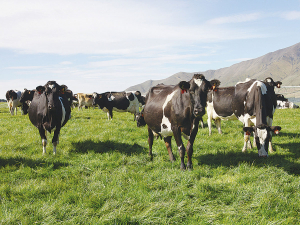Ensuring your cows have the best mating this season
Hit the ground running this mating with these foundations for success.
 The two-year study, which veterinarian Richard Nortje says is the first of its kind in New Zealand, was commissioned by AgriHealth.
The two-year study, which veterinarian Richard Nortje says is the first of its kind in New Zealand, was commissioned by AgriHealth.
A recent study has confirmed numerous benefits for dairy farmers to synchronising mating of heifers.
The two-year study, which veterinarian Richard Nortje says is the first of its kind in New Zealand, was commissioned by AgriHealth.
Comparing bull mating with synchronised mating following a DIB Co-Synch program, the study aimed to compare in-calf rates between the two groups.
“In terms of our trial set up, we had about 1450 heifers across five farms,” says Nortje.
He says the heifers were weighed within a month of the planned start of mating and the first DIB Co-Synch visit. The animals were then randomly allocated to either the synchrony group or the control group.
The study found a number of benefits, including higher in-calf rates, with more heifers from the synchronised group pregnant at the end of mating than in the control group.</p
“In terms of results, the key benefits of the synchrony was that there was on average 11 days more in milk compared to bull mating,” says Nortje.
He says there was a 55% average conception rate to the synchrony heat
Nortje says there were 3% more pregnant heifers, 11 days more in milk resulting in 13kg more milk solids per heifer.
Something else the study wanted to look at, according to Nortje, was whether there were any additional benefits to calving earlier.
For this part of the study, researchers measured premating heats and normal fertility outcomes during the heifers’ first lactation. “There were no further flow on benefits from the synchrony group,” says Nortje.
In other words, he says, all the benefits of synchronised mating were captured during the first mating period.
Westpac NZ has announced new initiatives that aim to give customers more options to do their banking in person.
New Zealand red meat exports experienced a 29% increase year-on-year in September, according to the Meat Industry Association (MIA).
The head of the Ministry for Primary Industries (MPI) biosecurity operation, Stuart Anderson, has defended the cost and the need for a Plant Healht and Environment Laboratory (PHEL) being built in Auckland.
BNZ says its new initiative, helping make the first step to farm ownership or sharemilking a little easier, is being well received by customers and rural professionals.
The head of Fonterra's R&D facility in Palmerston North is set to literally cross the road and become the new vice chancellor at Massey University.
Allan Freeth, chief executive of the Environmental Protection Authority (EPA) has announced he is resigning.